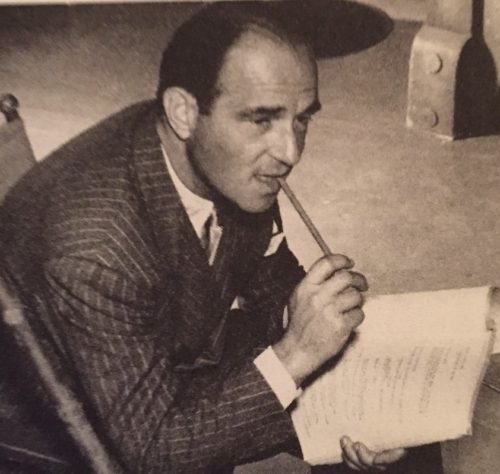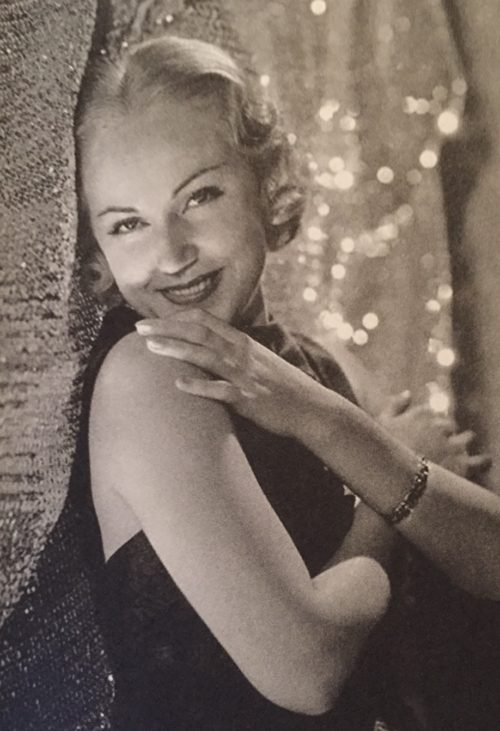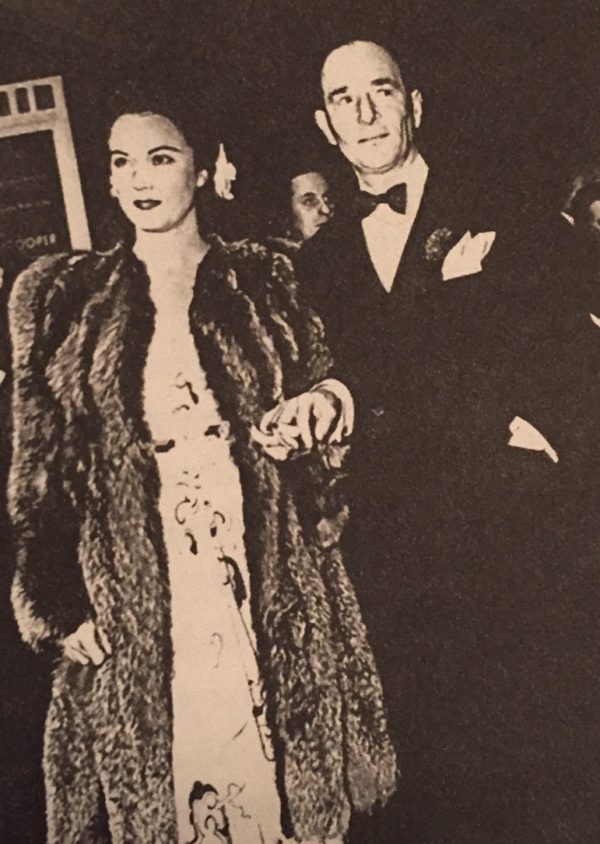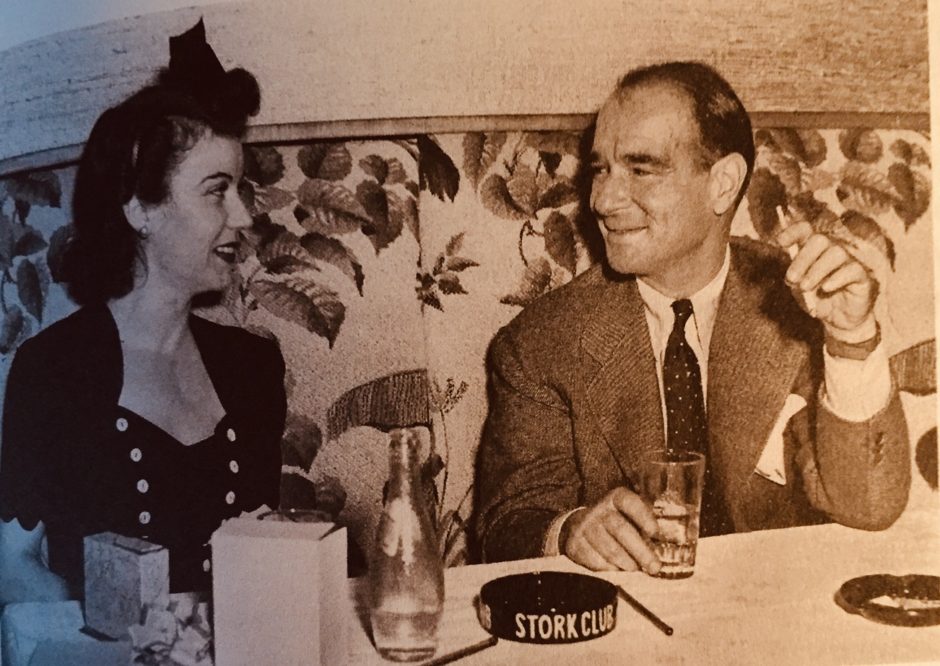Robert Riskin and his wife, Fay Wray, were a Hollywood celebrity couple in the 1940s, when the popularity of movies in American culture reached record heights.

Riskin was a master screenwriter, cranking out scripts for classic films that helped define the United States to itself and the world: It Happened One Night, Mr. Deeds Goes To Town, and The Whole Town’s Talking, among others. His films, noted for their wit and charm, featured smart, sassy and independent women.
Wray, most famously, appeared opposite a twenty-five foot tall, sixty-ton gorilla in King Kong, the iconic movie that captivated a nation. In more than 120 pictures, she starred opposite high-profile actors like Gary Cooper, Clark Gable, Spencer Tracy and William Powell.

Their daughter, Victoria, has written a thorough and thoughtful dual biography of her parents. Fay Wray and Robert Riskin: A Hollywood Memoir (Pantheon Books) unfolds, in the main, during Hollywood’s so-called golden era.
Riskin and Wray, who hailed from completely different regional and religious backgrounds, met at a party in Los Angeles in 1940. Although they hit it off, they parted ways. They met again a year later, two weeks after Pearl Harbor, and connected. She proposed to him, and they were wed in a small ceremony in 1942 attended by a few close friends, including the composer Irving Berlin and the movie producer David O. Selznick.
“It was not inevitable that Robert Riskin and Fay Wray would marry,” she writes. “They had lost contact with each other and each may also have lost any hope of reuniting. It was also not clear that my father wanted to get married at all. He was now in his forties, and he had stayed the cultivated, nonchalant playboy.”
As she adds, Riskin had dated actresses like Carole Lombard and Loretta Young and seemed content with his bachelor status.
Wray, after falling in love with Riskin, set aside her career to devote herself to him. “They never really discussed whether she should give up acting. My father simply said, ‘Angel, do whatever makes you happiest.'” As it happened, she resumed her career, appearing in a succession of films from 1942 onward.
Riskin, born in 1897 in New York City, was the son of Russian Jewish immigrants who arrived in the United States six years earlier. Wray was born into a Mormon family in 1907 in the Canadian province of Alberta, the daughter of local pioneers.
Riskin quit school at 13, becoming an office boy at a textile company and then at a garment factory. At 17, he entered the fledgling movie industry as an independent producer, churning out more than 100 Klever Komedies, most of which have been lost. He was then a moderately successful playwright.
He was 33 when he arrived in Hollywood, never having written, or likely read, a feature screenplay. In his first two years at Colombia, he wrote the screenplays or dialogue for nine films. He had a knack for dramatic structure, character and fast, breezy dialogue.

His boss, Harry Cohn — a notorious womanizer — was rough and ruthless. But he had qualities that Riskin admired. Cohn recognized and nurtured talent and liked people who spoke their minds. Riskin, too, appreciated “the hardscrabble path Cohn had taken to build up his studio.” Cohn was, like the author’s father, the son of a tailor who grew up on the streets of New York and left school after the eighth grade to work.
Riskin formed an association with the Italian American director Frank Capra, whose conservative outlook was diametrically opposed to own liberal inclinations. “They would be given all the plum assignments and wide latitude in picking their own projects, and Cohn would essentially leave them alone,” she says.
Wray broke into the industry in 1924 playing minor parts in Hal Roach silent comedies. In 1926, she signed on with Universal. Her first film with that studio, Lazy Lightning, was directed by William Wyler. In 1928, she moved to Paramount. Later, she was also under contract to Warner Brothers, Fox, United Artists and RKO.

Wray’s breakthrough film, King Kong (1933), wound up costing what was then the astronomical sum of $680,000, but it saved RKO from bankruptcy during the Depression.
Riskin suggests that her father lived in a bubble. As she puts it, “Film was a world where Jews were not only welcome but were a collective force that helped create an art and a business that was a vital part of Los Angeles, and ultimately of the country’s cultural identity and economy. But even in a city where the motion picture industry was dominant, Jews encountered rigid social barriers until the 1960s and 1970s, when the doors to restricted clubs and organizations were finally opened. It was felt by some Jews that the social and business leaders of Los Angeles, needing funding for their museums, theatres, symphonies and hospitals, turned to Jewish leaders of the entertainment industry, offering social acceptance in return.”
Riskin’s last film before the United States’ entry into World War II was Meet John Doe (1941), starring Gary Cooper and Barbara Stanwyck. From that point forward, he worked for a U.S. government agency, the Overseas Film Division of the Office of War Information. Over the next three years, he produced 26 documentary shorts running the gamut from Swedes in America to Library of Congress, intended to win hearts and minds abroad.

In mid-April 1945, with Germany all but defeated, he submitted his resignation. Several months later, he formed Robert Riskin Productions, with Wray serving as vice-president. The company failed, and in 1948 he accepted a position at Twentieth Century-Fox from the producer Darryl Zanuck. Soon, he and Capra were reunited as a creative team.
Riskin suffered a stroke in 1950 from which he never recovered. His final film, Here Comes the Groom, starring Bing Crosby and Jane Wyman, was released in 1951. Finding herself in straitened financial circumstances, Wray returned to acting, taking virtually anything that was offered.
Riskin died in 1955. Rabbi Edgar Magnin, the “rabbi to the stars,” officiated at his funeral. “I had never seen a rabbi before and when he recited the Mourners’ Kaddish in Hebrew, the words were foreign … but at ten I grasped for the first time that my family was Jewish.”
Despite his long friendship with Raskin, Capra did not attend the memorial service, a glaring absence she found “mystifying” and “bewildering.”
In 1971, Wray remarried Sanford Rothenberg, Riskin’s neurosurgeon, and their marriage lasted until his death in 1991. She died in 2004, six weeks short of her 97th birthday. Two days after her passing, the rainbow-colored lights on the spire of the Empire State Building, where one of the key scenes in King Kong unfolded, was illuminated in her honor.
